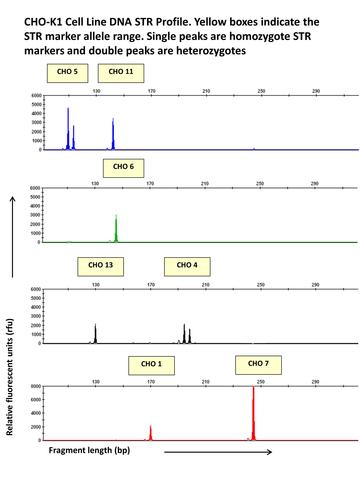Summary
The misidentification of cell lines has been a problem in the scientific community for the past 50 years. Methods are now in place to genotype human cell lines using well characterized procedures used in the forensic community based on short tandem repeat (STR) markers; however, methods to identify non-human cell lines are still in the development process. Chinese hamster ovary (CHO) cell lines are heavily used in the manufacturing of recombinant protein therapeutics. To aid in the regulatory and QC stages of development of these therapeutics, an assay to authenticate CHO cells would be beneficial in detecting contamination early on. To date, we have identified nine STR markers specific to CHO DNA and seven markers have been used successfully in a multiplex PCR assay. When improved versions of the CHO genomic sequence are released, we will be able to map the markers to their respective chromosomal locations and develop additional markers.
Description
Intended impact
To develop a PCR based multiplex assay that can be used to authenticate Chinese hamster ovary cell lines which are important in the production of biological therapeutics.
Objectives
- Identify tetranucleotide STR markers by searching the CHO genome using BLAST
- Design and optimize a functional multiplex PCR assay
- Determine specificity of the assay
- Determine stability of the STR markers over high passage number
Technical approach
Tetranucleotide short tandem repeat (STR) markers were identified in the CHO-K1 genome using a bioinformatics approach (BLAST). Primers were designed flanking the STR target regions and were screened using PCR and gel electrophoresis. Forward primers were labeled with a fluorescent dye and further screening of primer sets were completed using capillary electrophoresis. Multiplex reactions were tested and optimized (varying the concentrations of DNA, primers, etc.). Allele distributions were determined by testing CHO DNA from several sources.

Major Accomplishments
- Multiplex of seven STR markers that are specific to Chinese hamster DNA and will not amplify rodent DNA such as rat, mouse, or gerbil.
- Stability studies are complete and show that the STR profiles for CHO-K1 are stable up to passage 35 in culture
- The characterization of 2 additional STR markers and development of additional markers is in progress to increase the resolving power of a multiplex assay

